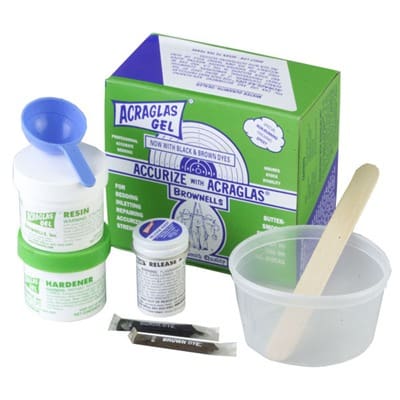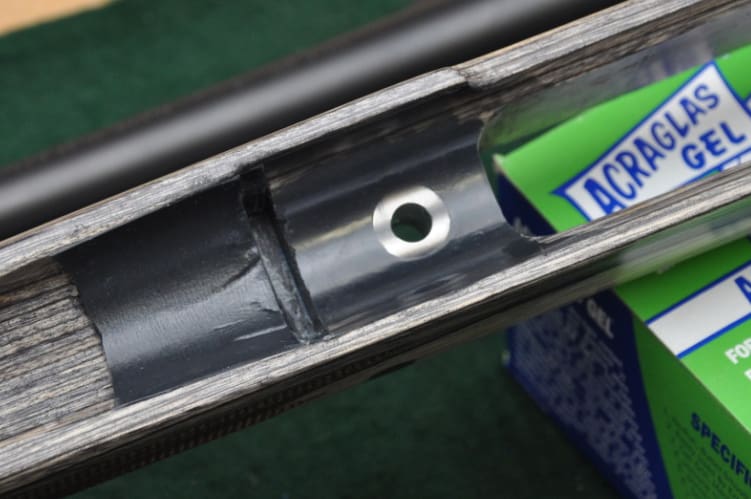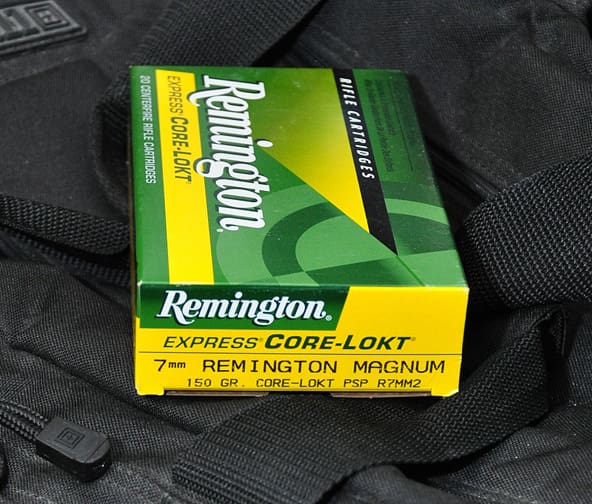Most movie goers would agree that sequels and threquels of movies are rarely as good as the original. There are very few I can say I like as well as, let alone better than, the original. Shrek Forever After, Pirates of the Caribbean: At World’s End, and Toy Story 3 are a few of the good ones. Luckily for me, Part III of the Elk Slayer Project turns out to be a lot more like Return of the Jedi than Matrix Revolutions.
For those who haven’t read Part I (as-is OEM LSS Stock), Part II (Hogue OverMold Stock), or Part II-1/2 (pillar bedding process), let me get you up to speed. In Part I, the OEM LSS stock showed an average grouping of around 1.5” (extreme spread). In Part II I installed the Hogue OverMold stock which was good for just under 1.9” (extreme spread). Just by eyeballing it, both groupings were close enough to each other that I wouldn’t consider either the LSS stock or OverMold to be superior to the other (as far as accuracy goes).
In Part II-1/2, you can see the detailed process of how I pillar bedded my Remington 700 BDL. I used Acraglas Gel and aluminum pillar bedding sleeves, both of which were ordered from Brownell’s. Although I was originally intimidated by the prospect of playing with epoxy on my favorite elk and javelina hunting rifle, I threw caution to the wind and went for it. Was it worth the time and energy? Keep reading to find out.
 At the Range
At the Range
Since I took the scope off of the rifle to pillar bed it, I had to bore sight and adjust POA before I started testing. To make it easy, I used a large 50-yard target that has a bright red center to get the rifle and scope “rough sighted.” Using some extra 150-grain Remington Core-Lokt rounds, I shot 3 rounds, adjusted as needed, and got to work.
Just as before, testing proceeded in the following order: 5 shots, 5 minute wait, 5 shots, 5 minute wait, 5 shots, about a 25 minute wait, and 5 more shots. For the first and last set of 5, the barrel was completely cooled. Each shot was loaded and shot individually, meaning I never had more than one cartridge in the gun at any one time. A picture of the target is below.
Results
After bedding, the average extreme spread went from 1.47” (original LSS stock) to 1.17” (pillar bedded LSS stock), an improvement of 20%. The raw data is as follows:
|
7mm Rem Mag Remington Core-Lokt 150-gr PSP R7MM2 |
Group 1* |
Group 2 |
Group 3 |
Group 4* |
Avg (rows) |
Std Dev (rows) |
|
Vertical Spread (in) |
0.716 |
0.779 |
1.216 |
0.404 |
0.779 |
0.334 |
|
Horizontal Spread (in) |
1.101 |
0.466 |
1.216 |
0.841 |
0.906 |
0.333 |
|
Extreme Spread (in) |
1.279 |
0.779 |
1.654 |
0.966 |
1.169 |
0.383 |
|
Avg Spread (in) |
1.190 |
0.674 |
1.362 |
0.737 |
0.991 |
NA |
|
Accuracy Testing – Best 4 of 5 rounds, 100 yards, 63F, Acraglas bedded LSS stock (*) denotes a cold barrel |
||||||
If that wasn’t enough of an improvement, consider this. The measurements I’ve been using have been the best 4 out of 5 shots. If I run the numbers using all 5 of 5 shots, the improvement is remarkable. Recalculating extreme spread with all 5 shots, Part I clicks in at 2.59” and Part III at 1.59”, an improvement of 40%.
|
Best 4 of 5 shots |
Best 5 of 5 shots |
|||
|
Group # |
Part I |
Part III |
Part I |
Part III |
|
1 |
1.50 |
1.28 |
2.34 |
2.22 |
|
2 |
1.40 |
0.78 |
3.22 |
1.03 |
|
3 |
1.50 |
1.65 |
2.34 |
1.97 |
|
4 |
1.47 |
0.97 |
2.47 |
1.15 |
|
AVGS |
1.47 |
1.17 |
2.59 |
1.59 |
That is a significant improvement. Bench rest shooters, long-range competitors, varmint hunters, and the like spend hours and sometimes days on end testing load after load until they come up with that “magical” combination of bullet, powder, primer, case length, OAL, etc. Considering the entire pillar bedding process can be accomplished in less than a weekend (but give it a week to fully cure), I’d say that dollar for dollar and minute for minute, bedding a rifle is certainly a worthwhile investment of time and resources.







This was a very interesting series, Patrick. You started with a very good rifle and turned it into a better one. Question: would bedding the action turn a lesser rifle into a good one? I wonder.
@Ralph – I would have a say that everything is proportional. I measured a full inch smaller in group size which translated into a 40% improvement (5 shots). While it didn’t turn this rifle into a sub-MOA gun (remember, this is 150-grain factory ammo in a magnum caliber), I’m sure I am “on the curve” (bell curve that is). There will be guns that show better improvements, and some that show worse. However, it is likely that the overwhelming majority of rifles will show some improvement. For me, the next step is ammo characterization. I don’t know if I’m going to have someone handload for me (I don’t hand load yet… gotta save some $$ for equipment). I’ll likely just retest the loads I had previously tested and perhaps order some newer loads from Brownell’s to see if I can get this gun to shoot 5 or 7 shot groups under 1″.
You can get started with a basic reloading setup for right at $200 plus components. That gets you a good solid single stage press, beam balance scale, and at least one set of dies.
I always recommend that someone start with just such a rig as it lets you carefully manage each step of the reloading process without the mechanical complications of a progressive press, and it’s sufficient to turn out ammo at least equal to factory.
Once you have the basics down pat you can progress to the finer details that help produce match grade ammo such as segregating cases and bullets by weight and turning case necks to uniform thickness.
Depends on the rifle in question. Bedding some actions results in very modest improvements, in others made prior to the notion of bedding blocks or glass bedding, the improvement can be substantial.
Excellent series – thanks for the posts!
Comments are closed.